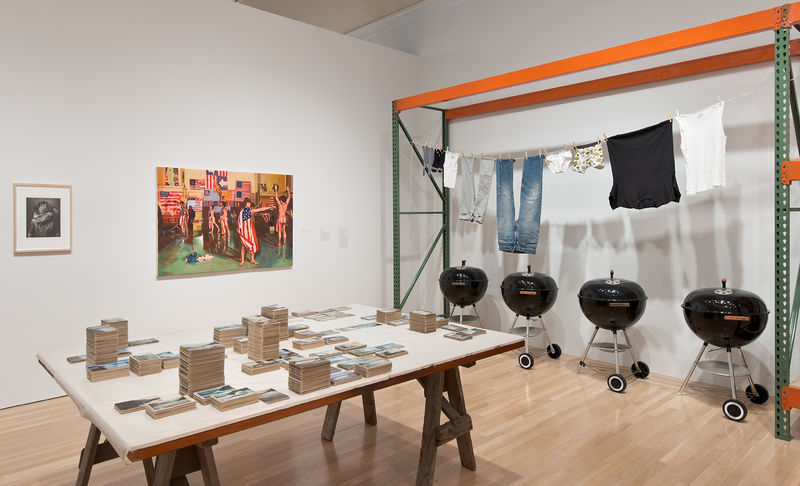
John Miller
An active critic and artist, John Miller has produced an eclectic body of paintings, drawings, photographs, and texts that are marked as much by their seriality as by their individuality. Miller studied at California Institute of the Arts in the late 1970s, during the heyday of conceptual and language-based artistic practice and instruction. If 1980s reactions to conceptualism and minimalism are often characterized as either the "Pictures" artists' turn to mass media and treatment of the image as a reproducible sign or the neo-expressionist explosion of painting, Miller subversively pursued both tracks at once. "Part of the impetus for me, and others," he has stated, "was to bring the political agenda of alternative media back to painting."#
Miller is best known for a series of brown relief paintings that he began to make in the mid-1980s. Built up from a thick, granular impasto, many of these paintings are a chocolaty, fecal mess of inchoate mounds, formed from objects buried just below the surface. In an untitled relief of 1990, chunks, wedges, and balls adhere like growths to the canvas. Under the muddy pigment, which Peter Schjeldahl called "John Miller Brown," just a few forms are discernible: some thin, sticklike objects, a bell, and a metal O.# Miller described the submerged reliefs as "a supposed signature style," noting, "I thought of it as a trademark no one wanted."# He used the thickened paint to form intentional, self-conscious brushstrokes that both function as and caricature brushstrokes. According to Miller, the paintings might be allegories of neo-expressionism: "the impasto connoting excrement which in turn connotes money."# Miller's brown paintings, reliefs, and sculptures introduced a scatological frame through which much of his subsequent production has been read.

Miller's recent series of paintings titled Everything Is Said (2012) depicts people crying on reality TV shows. The faces of the figures, rendered in shades of gray against simple backgrounds, are tightly framed, which emphasizes their contorted expressions and loss of composure. Everything Is Said 24, for instance, depicts two male figures sitting close to each other: the strained, downturned mouth and furrowed brow of the figure in the foreground signals his sadness while the figure in the rear brings his mouth to his shoulder with a palpable sense of melancholy. Whatever intimate and painful episode unfolded on broadcast TV, Miller's painting draws our attention to contemporary behavior, to how adults divulge their private lives and say "everything" on national television but leave open any judgment as to the humanity or inhumanity of common culture. Miller, like his classmates and longtime friends Mike Kelley and Jim Shaw, discovers in the objects and images of middlebrow America a disconcerting yet liberating subversiveness.
—Ruth Erickson


